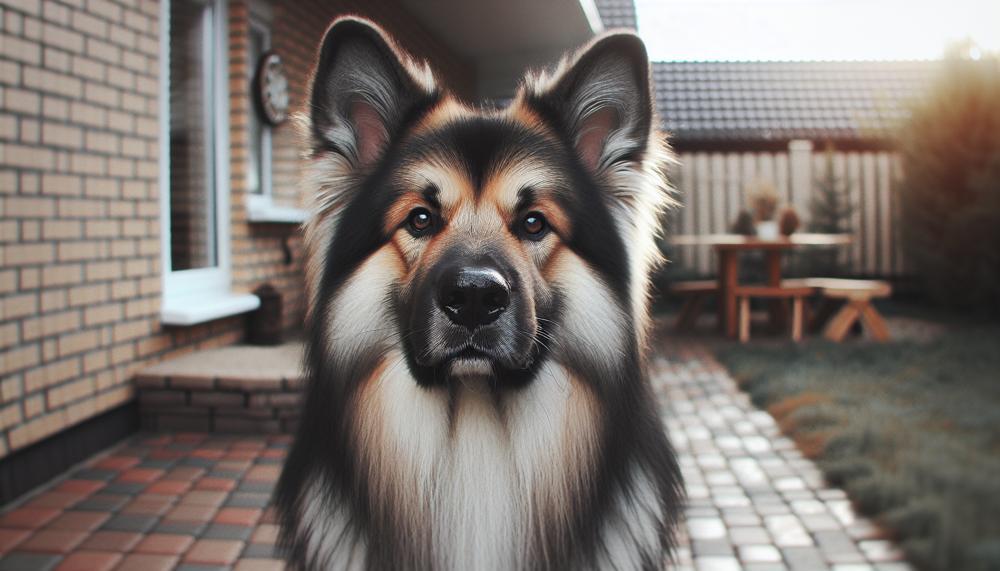Have you ever noticed your furry companion perched behind you, no matter where you are in the house? Whether you’re typing away at your desk, whipping up a meal in the kitchen, or lounging on the couch watching your favorite show, it seems like your loyal pup is always right there with you.
So, why does my dog sit behind me?
- Affection: Dogs often seek physical contact with their owners because they feel safe and content in their presence. Sitting behind you is a sign of affection and trust.
- Separation anxiety: Dogs with separation anxiety want to be by your side all the time. When you leave the house without them, they will cry, whimper, and sometimes resort to destructive behavior to get your attention.
- Feeling anxious: Dogs hide for many different reasons, the most common being that they want to feel safe. The need for safety could be due to fear, anxiety, depression, or stress.
- Seeking attention: This is a sign of a strong bond between you.
So, let’s delve into the world of our beloved four-legged friends and uncover the possible explanations for why they choose to sit behind us.
And don’t forget to reward your faithful companion with a tasty treat as we embark on this journey together.
Why Does My Dog Sit Behind Me?
Table of Contents
- Protection: Dogs are innately social creatures and have a natural instinct to protect their pack leader or alpha. By positioning themselves behind their owner, they can maintain a vigilant watch over their surroundings and be prepared to defend their owner if necessary.
- Comfort: Dogs thrive on routine and familiarity, and sitting behind their owner may provide them with a sense of security. This behavior is akin to how puppies snuggle up close to their mother for warmth and reassurance.
- Anxiety or fear: Some dogs may choose to sit behind their owner due to feelings of anxiety or fear in certain situations. By staying close to their trusted human companion, they can feel safe and calm.
- Coziness: For some dogs, sitting behind their owner may simply be a cozy spot, particularly on soft furniture. This behavior is more common in smaller dogs who may struggle to jump onto furniture or find a comfortable spot on the floor.
- Seeking attention and affection: Dogs are highly social animals and crave human interaction. Sitting behind their owner allows them to seek out attention, affection, and companionship.
- Seeking protection: Dogs have an innate urge to protect their owners, and sitting behind them can be a way for them to fulfill this instinct.
- Separation anxiety: In some cases, dogs may sit behind their owners as a result of separation anxiety, as it provides them with a sense of security.
- Learned behavior: If a dog receives positive reinforcement for sitting behind their owner in the past, they are likely to continue this behavior.
Should I Be Worried If My Dog Is Sitting Behind Me?
This behavior can be attributed to their instincts and learned behaviors. Dogs, being pack animals, have an innate desire to protect their owners and stay close to them. This often results in them settling down behind their human companions, allowing them to keep a vigilant watch on their surroundings while remaining in close proximity.

There are various reasons that may contribute to this behavior, such as:
- To guard their owner’s back: Dogs have a strong instinct to protect their pack, and sitting behind their owner allows them to keep an eye out for any potential threats from behind.
- To seek shelter from something frightening: If your dog is feeling anxious or scared, they may seek comfort by hiding behind you.
- To alleviate separation anxiety: Dogs who experience separation anxiety may choose to sit behind their owners in an attempt to stay close and feel more secure.
- To bask in warmth: Dogs are drawn to warmth and may choose to sit behind their owner if they are near a fireplace or in the sun.
- To feel more at ease and secure: Some dogs may simply find solace and security in sitting behind their owner, especially if they are feeling uneasy or insecure.
- To shield their owner from potential dangers: As mentioned earlier, dogs have a strong protective instinct and may sit behind their owner as a way to shield them from potential threats.
- To mark their territory: In some cases, dogs may sit behind their owners as a way of claiming their spot. This could be unintentionally reinforced by the owner, who may allow the dog to sit there or provide attention when they do so.
It is crucial to pay attention to your dog’s body language and behavior when they are sitting behind you. If they appear tense or agitated, it could be a sign of fear or discomfort.
If this behavior becomes excessive or starts to interfere with your daily routine, it may be beneficial to seek guidance from a professional dog trainer or behaviorist.
What Can You Do If Your Dog Is Sitting Behind You?
If you want to train your dog to sit in front of you instead of behind you, it’s crucial to establish yourself as the leader and create a positive association with this behavior.
This can be achieved by using positive reinforcement training techniques and setting clear boundaries.
Establish yourself as the leader:
Dogs are pack animals and naturally look to their leaders for guidance. By establishing yourself as the leader, your dog will be more likely to follow your commands and respect your authority.
This can be accomplished by consistently setting rules and boundaries, being firm and consistent with training, and displaying confidence and assertiveness.
Use positive reinforcement:
Positive reinforcement is a powerful training technique that involves rewarding good behavior with treats, praise, or affection. When your dog sits in front of you, immediately reward them with a treat or praise.
This will create a positive association with sitting in front of you and encourage them to repeat this behavior more often.
Be consistent:
Consistency is key when it comes to training dogs. Be sure to always use the same command when asking your dog to sit in front of you, and always reward them when they do so.
This will help them understand what is expected of them and make it easier for them to follow through.
Set clear boundaries:
It is important to set clear boundaries with your dog and teach them that sitting behind you is not acceptable behavior. When your dog tries to sit behind you, calmly redirect them to sit in front of you instead.
Consistently enforcing this boundary will help your dog understand that sitting in front of you is the expected behavior.
Practice in different environments:
Once your dog has mastered sitting in front of you at home, it’s important to practice this behavior in various environments. This will solidify the behavior and ensure that your dog understands that sitting in front of you is expected no matter where they are.
By following these steps, you can encourage your dog to sit in front of you instead of behind you. Remember, establishing yourself as the leader and using positive reinforcement are key in achieving this goal.
Why Does My Dog Sit Behind Me On the Couch?
It is essential to comprehend these reasons in order to establish a strong and healthy relationship with your furry friend.
Possible Causes for Dogs Sitting Behind Their Owners on the Couch:
- Protective Instincts: Dogs have an inherent instinct to safeguard their pack, which includes their owners. By sitting behind their owner on the couch, they are able to survey the surroundings for any potential threats while still being close to their beloved human.
- Social Connection: Dogs are social creatures and thrive on interactions with others. By sitting behind their owner on the couch, they can maintain close proximity and feel connected to their human, providing them with a sense of comfort and security.
- Love for Warmth: The body heat emitted by their owner is a major attraction for dogs, particularly during colder months. Sitting behind their owner on the couch allows them to snuggle up and stay warm.
- Display of Dominance: In some situations, a dog may sit behind their owner on the couch as a means of asserting dominance or establishing themselves as the alpha in the relationship. This behavior is often observed in households where there is a lack of clear leadership or boundaries.
- Anxiety in Separation: If a dog experiences separation anxiety, they may feel more secure when they are close to their owner. Sitting behind their owner on the couch may provide them with a sense of comfort and safety when they are apart.
- Seeking Comfort and Security: Similar to separation anxiety, some dogs may seek physical closeness with their owners as a means of finding comfort and safety. This behavior can also be seen in dogs who have experienced past trauma or abuse.
- Influence of Training and Discipline: Some dogs may have been trained or disciplined to sit behind their owner on the couch as part of obedience training or as a way to establish boundaries and reinforce their position in the pack.
Also Read: Why Does My Dog Howl When I Howl?
Conclusion
In conclusion, the act of a dog sitting behind their owner is a natural and common behavior that can be attributed to various factors such as protection, comfort, anxiety, or seeking attention.
By understanding the reasons behind this behavior and utilizing positive reinforcement techniques, dog owners can strengthen their bond with their beloved pets and establish a loving relationship. It is crucial to establish oneself as the leader, set clear boundaries, and address any underlying emotional issues in order to effectively manage this behavior.
Paying attention to your dog’s body language and needs will help you better understand their actions and provide them with the love and care they deserve.






